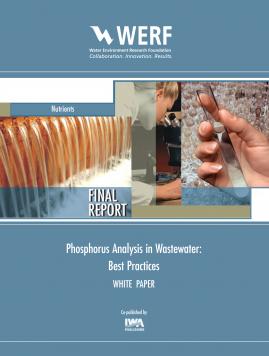Phosphorus Analysis in Wastewater: Best Practices

Phosphorus monitoring at wastewater treatment plants is essential as phosphorus (as total phosphorus) is an important main constituent regulated in treatment plant effluents. Recent trends are towards increasingly lower phosphorus limits, requiring reliable lower and lower phosphorus measurements. There is a long history of P analysis in dilute matrices; i.e., river and lake water and best practices have been developed. These best practices for surface waters are reported herein. Potential issues in wastewater P analysis by colorimetry include, pH, proton to molybdenum ratio, color development time, and digestion method. Of equal importance are the QA/QC measurement protocols implemented by wastewater analysis labs; demonstrably well performing examples from Coeur d’Alene, Spokane, and the City of Las Vegas are presented. Total reactive phosphorus is an ambiguous analytical measurement because the quantitative results depend strongly on color development time. For low level analysis, long path lengths have advantages in more precisely resolving low concentrations. Replicate measurements are essential, especially for low level P samples, in order to capture the true value of the sample within variability.When dealing with low concentrations even a small absolute error is a large relative error; thus, replicate measurements are essential to estimate true concentrations for dilute phosphorus samples.

